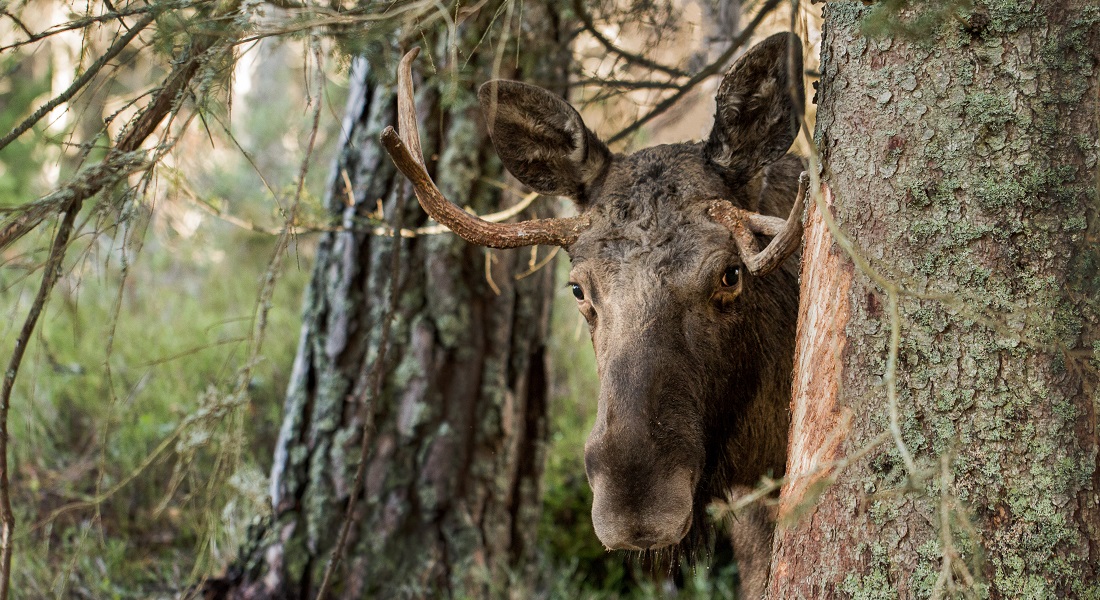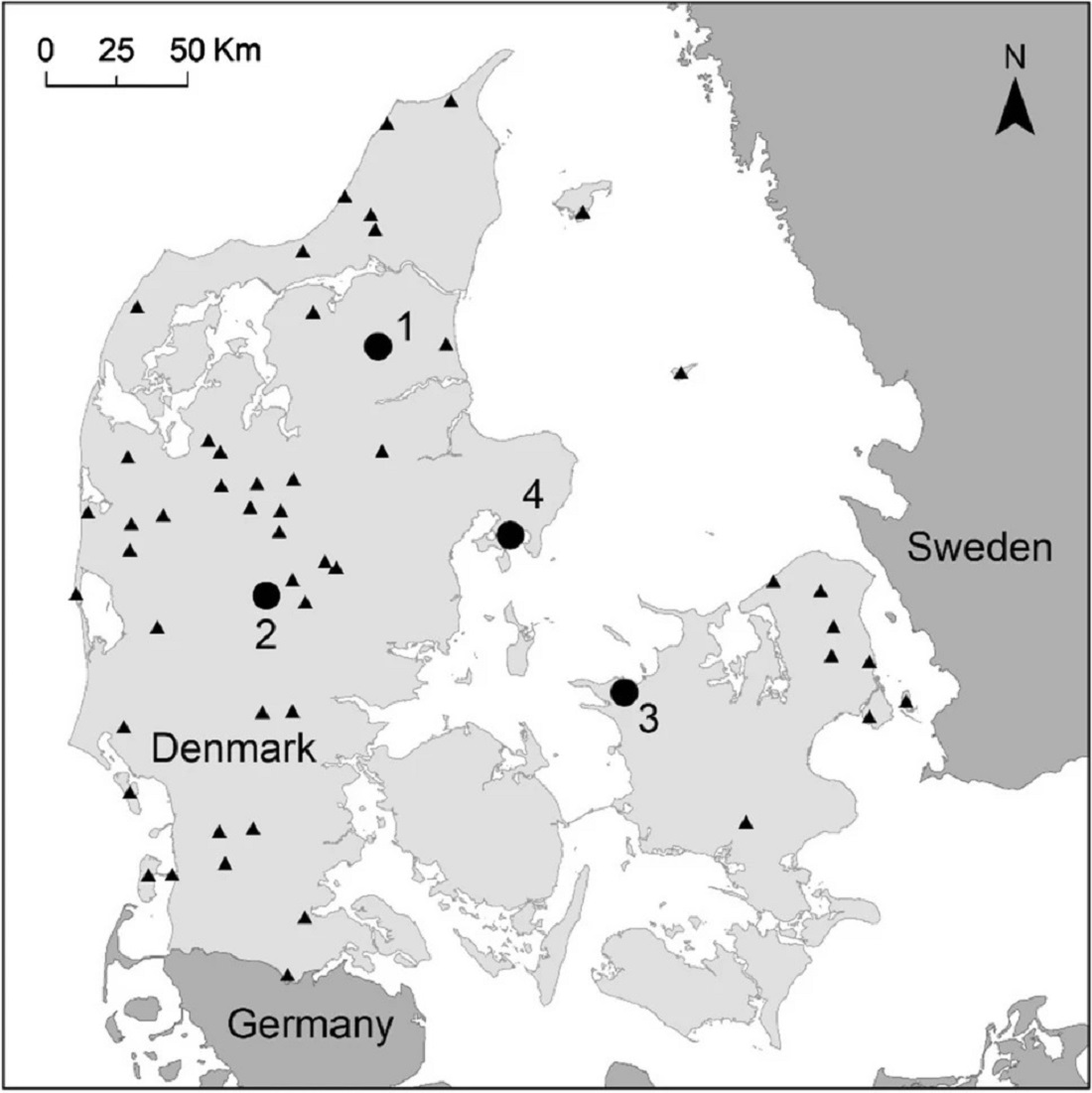
Letting nature manage itself may lead to the least costs - but EU subsidies remain an obstacle
Nature management through rewilding can be significantly more cost-effective than by traditional conservation measures. However, EU agricultural subsidies distort competition. This is the conclusion of an economic analysis headed by the University of Copenhagen.

Thirteen new national parks have been planned for Denmark. The Danish government proposes that park management should be based on rewilding, a strategy that includes the reintroduction of key grazing animals such as bison, elk and red deer in large natural areas that will manage themselves. The concept has become a heated topic of debate. One of the arguments against rewilding is that its economic costs will be high.
But that argument does not always hold up, according to the first major economic analysis in this area. The analysis, led by the University of Copenhagen, compares the cost of rewilding in large contiguous natural areas with today’s most common type of nature conservation: extensive farming, with cows or sheep grazing on grassland. This type of conservation does not seem to have been able to halt biodiversity loss , which continues to shrink. On the other hand, numerous studies suggest that rewilding is a biologically more efficient method of management.
"Looking at the costs alone, rewilding can also be the most effective way of restoring nature for society. And, if the EU subsidies are exempted, the picture is in clear favour of rewilding," states Associate Professor Jesper Sølver Schou of the University of Copenhagen’s Department of Food and Resource Economics.
EU support distorts competition
The analysis points out that EU agricultural support schemes, which are the main financing feature of nature conservation schemes in Denmark, create lopsided competition between the two types of management. Regardless of whether we opt for rewilding or continue with nature conservation in the form of extensive farming, there is a negative effect on revenues. However, whereas EU subsidies compensate for farm-based management expenses, the EU does not support nature management initiatives like rewilding.
"Because EU support schemes favour agricultural-based nature management, it is very difficult for other types of management to compete. As a result, both private and public landowners have incentives to continue with extensive farming, despite the fact that rewilding—both scientifically and socio-economically—can be a better solution," says Jesper Sølver Schou.
Even without EU subsidies, rewilding can be cheaper
The researchers analysed the cost of four scenarios in Denmark, each of which has the potential to be a large contiguous natural area: Rebild Forest National Park, Mols Hills National Park, Nørlund Plantation and Harrild Heath, and Saltbæk Bay. For each of the four case areas, the researchers formulated a series of management scenarios in which they conducted a comprehensive cost analysis.
The analysis shows that costs vary from area to area, but that in all four cases, rewilding is significantly cheaper than traditional nature conservation if the EU agri-environmental subsidies are eliminated. However, in most cases, subsidies mean that nature conservation based on low input agricultural grazing is cheaper than rewilding.
That being said, there are also examples of rewilding being a least cost alternative, even when accounting for EU subsidies. This is especially true in relation to summer grazing, which is currently one of the most common types of nature conservation in Denmark. Here, the analysis shows that rewilding can lead to cost savings for all four areas if large contiguous natural areas were to be made of these sites.
"In light of the fact that the Danish government has initiatives such as a biodiversity action plan and nature-national parks under way, the analysis is a very important insight to bring into the current negotiations of the EU's future support schemes. At the same time, the analysis demonstrates the importance of developing a thorough socio-economic basis when planning major nature projects," explains Jesper Sølver Schou.
Another key point of the analysis is that degrees of expenditure are highly dependent upon the preexistent type of activity in each area. If there is intensive agriculture or forestry, it is expensive to convert it into a natural area, as losses due to the cessation of these existing activities—the so-called opportunity cost—is relatively large. On the other hand, if the level of activity is already low, the opposite applies.

Topics
Related News
Contact
Jesper Sølver Schou
Associate professor
Department of Food and Resource Economics (IFRO)
University of Copenhagen
jss@ifro.ku.dk
+45 35 33 69 01 / +45 25 14 66 76
Maria Hornbek
Journalist
Faculty of Science
University of Copenhagen
maho@science.ku.dk
+45 22 95 42 83
Facts
- The analysis is the first systematic economic analysis of different management methods for large contiguous natural areas.
- The analysis was originally carried out as a project for The Danish Environmental Protection Agency. It has now been published as a scientific article in the journal Ambio. The analysis was conducted in collaboration with biologists from Aarhus University.
- The four scenarios studied—Rebild Forest National Park, Mols Hills National Park, Nørlund Plantation and Harrild Heath, as well as Saltbæk Bay—have been selected based on their diversity in habitat types and current activities. Forest makes up a large part of two of the areas, while the two other scenarios are characterized by more open space.
- Rewilding is based upon the promotion of more biodiverse ecosystems by restoring natural processes. This means exposing key species, including large herbivores such as bison, moose and red deer to large contiguous natural areas, which should manage themselves to the greatest extent possible.
- Nature conservation in the form of extensive grazing takes place either by having livestock on grasslands during the summer months and in stables during the winter season, or by the year-round grazing with robust domesticated animals. According to the analysis, the cost is reduced if you switch from summer grazing to year-round grazing, and even more so if you switch from year-round grazing to rewilding. However, EU subsidies compensate some of the loss when applying agri-environmental management, but not for rewilding.

